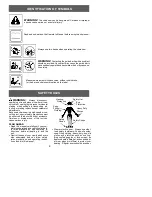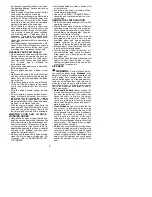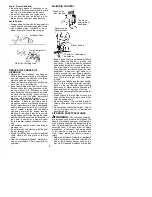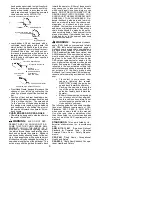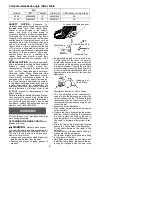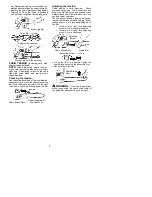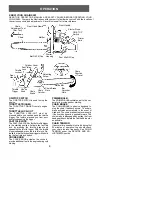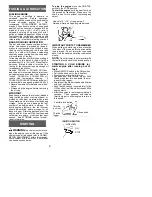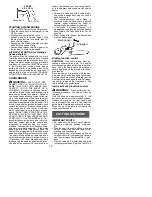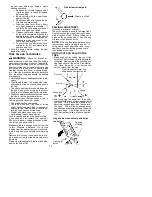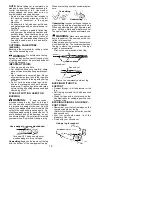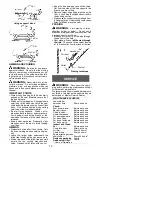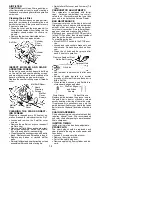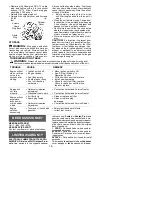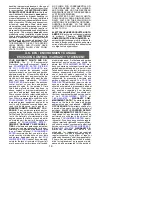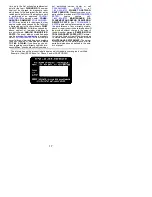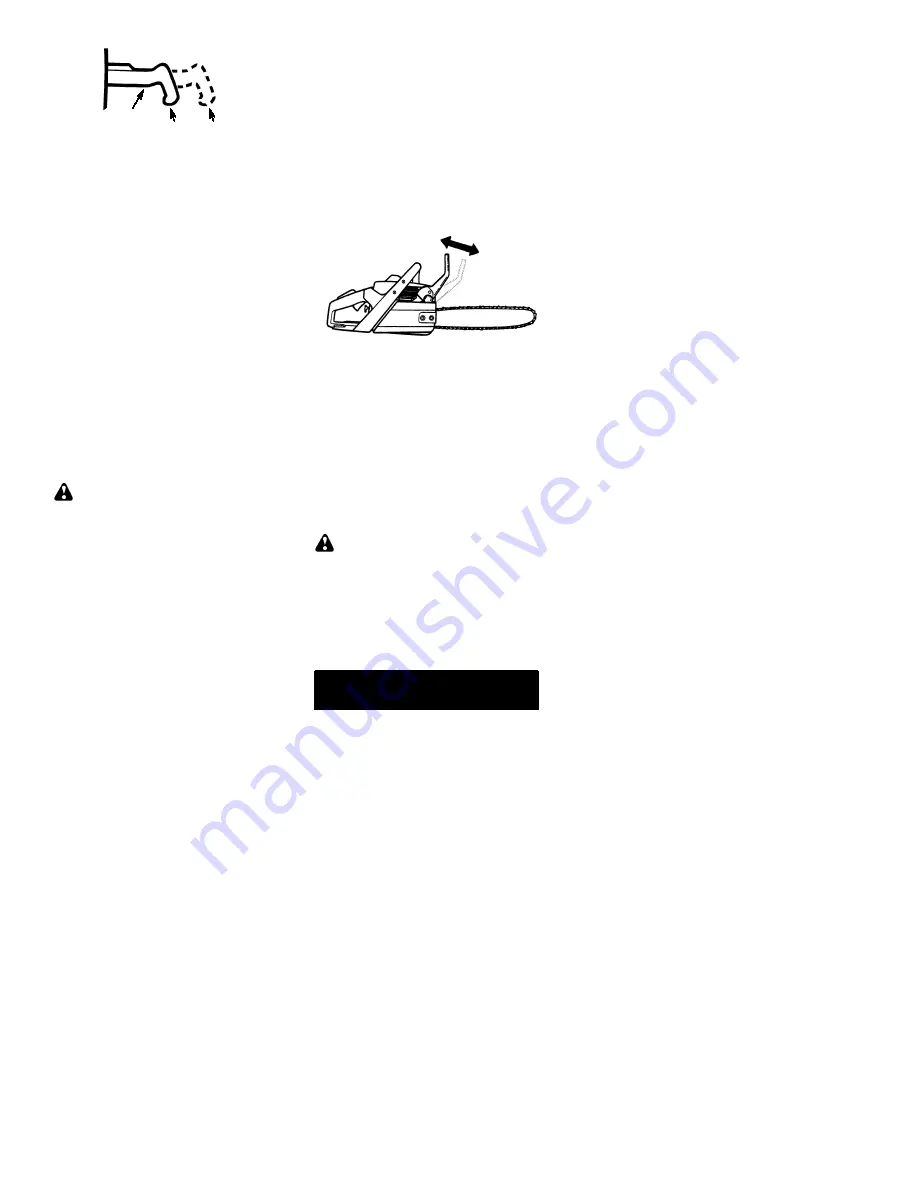
10
OFF FULL
CHOKE
Choke Knob
(SIDE VIEW)
STARTING A WARM ENGINE
S
Move ON/STOP switch to the ON position.
S
Push the choke knob in completely (to the
OFF position).
S
Slowly press primer bulb 6 times
.
S
Squeeze and hold throttle trigger. With
thumb press fast idle lock down; then re-
lease throttle trigger.
S
Sharply pull the starter rope with your right
hand until the engine starts
.
S
Squeeze and release throttle trigger to al-
low engine to return to idle speed.
DIFFICULT STARTING (or starting a
flooded engine):
The engine may be flooded with too much
fuel if it has not started after 10 pulls. Flooded
engines can be cleared of excess fuel by fol-
lowing the warm engine starting procedure
listed above. Insure the ON/STOP switch is
in the ON position. Starting could require
pulling the starter rope handle many times
depending on how badly the unit is flooded. If
engine fails to start, refer to the TROUBLE-
SHOOTING TABLE or call 1-800-554-6723.
CHAIN BRAKE
WARNING:
WE DO NOT REP-
RESENT AND YOU SHOULD NOT AS-
SUME THAT THE CHAIN BRAKE WILL
PROTECT YOU IN THE EVENT OF A
KICKBACK. Kickback is a lightning fast ac-
tion which throws the bar and rotating chain
back and up toward the operator. Kickback
can be caused by allowing contact of the bar
tip in the danger zone with any hard object.
Kickback can also be caused by pinching the
saw chain along the top of the guide bar. This
action may push the guide bar rapidly back
toward the operator. Either of these events
may cause you to lose control of the saw
which could result in serious injury or even
death. DO NOT RELY UPON ANY OF THE
DEVICES BUILT INTO YOUR SAW. YOU
SHOULD USE THE SAW PROPERLY AND
CAREFULLY TO AVOID KICKBACK. Re-
duced--kickback guide bars and low--kick-
back saw chains reduce the chance and
magnitude of kickback and are recom-
mended. Your saw has a low kickback chain
and bar as original equipment. If the brake
band is worn too thin it may break when the
chain brake is triggered. With a broken brake
band, the chain brake will not stop the chain.
The chain brake should be replaced by an
authorized service dealer if any part is worn
to less than 1/32” thick. Repairs on a chain
brake should be made by an authorized ser-
vice dealer. Take your unit to the place of pur-
chase if purchased from a servicing dealer,
or to the nearest authorized master service
dealer.
S
This saw is equipped with a chain brake.
The brake is designed to stop the chain if
kickback occurs.
S
The inertia--activated chain brake is
activated if the front hand guard is pushed
forward, either manually (by hand) or
automatically (by sudden movement).
S
If the brake is already activated, it is
disengaged by pulling the front hand guard
back toward the front handle as far as
possible.
S
When cutting with the saw, the chain brake
must be disengaged.
Disengaged
Engaged
Braking function control
CAUTION:
The chain brake must be
checked several times daily. The engine
must be running when performing this proce-
dure. This is the only instance when the saw
should be placed on the ground with the en-
gine running.
Place the saw on firm ground. Hold the han-
dles with both hands and apply full throttle.
Activate the chain brake by turning your left
wrist against the hand guard without releas-
ing your grip around the front handle. The
chain should stop immediately.
Inertia activating function control
WARNING:
When performing the
following procedure, the engine must be
turned off.
Hold the chain saw approximately 14” (35
cm) above a stump or other wooden surface.
Release your grip on the front handle and
use the weight of the saw to let the top of the
guide bar fall forward and contact the stump.
When the tip of the bar hits the stump, the
brake should activate.
CUTTING METHODS
IMPORTANT POINTS
S
Cut wood only. Do not cut metal, plastics,
masonry, non-wood building materials,
etc.
S
Stop the saw if the chain strikes a foreign
object. Inspect the saw and repair or re-
place parts as necessary.
S
Keep the chain out of dirt and sand. Even a
small amount of dirt will quickly dull a chain
and thus increase the possibility of kick-
back.
S
Practice cutting a few small logs using the
following techniques to get the “feel” of us-


